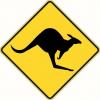Ok I'm at a loss, my Cardio Ablation isn't until the 17th. and my energy level is such doing much more than sharpening a chisel kicks my butt. That doesn't stop me from thinking and an area I've been thinking about is why do we do the thing that we do when sharpening our cutting tools.
I work from one given, the smoother the cutting edge the longer the edge will stay working sharp. But if length of time isn't a factor how smooth does the edge need to be to work and leave a usable surface. It kinda depends on what you call a usable surface.
I did a quick and dirty test using a post-war Marples 3/4 chisel that I hollow ground to a 25* bevel on the Tormek, mostly because if I wanted to extend the test I could return the chisel to the same condition easily.
Here is the chisel:
chiselA.jpg
And the bevel off the Tormek:
chiselB.jpg
I tested four basic conditions: Honed on a Medium India and then stropped on oiled leather. After testing the cut then stropping on leather with compound. Honed on a Wachita follow by the same stropping protocol. Honed on a Black Arkansas and same stropping protocol. And last honed on a JNat finishing stone with out stropping. BTW, the difference between stropping on oiled leather vs. leather with compound was only in the shine.
Again all subjective but the subjective results were as I expected. The effort to pare was close to the same for all stones and stropping protocols. In a blind test I doubt I could have picked one from another. A tactile feel of the surfaces would have been difficult but there were some very slight difference in feel between the cuts but you would have to work at it to identify which was the smoother.
A visual inspection using a 10X loupe showed a clear progression from the India to the Black Arkansas with no difference between the Arkansas and the JNat.
Bottom line, if longevity isn't a factor, the India and a strop gives a good enough working edge for almost any task. I'll still go to the Black Arkansas or the JNat for final honing but my guess is it isn't necessary for most jobs.
ken





 Reply With Quote
Reply With Quote




 . When I can't think of what to do next I will usually hit the stones.
. When I can't think of what to do next I will usually hit the stones.
